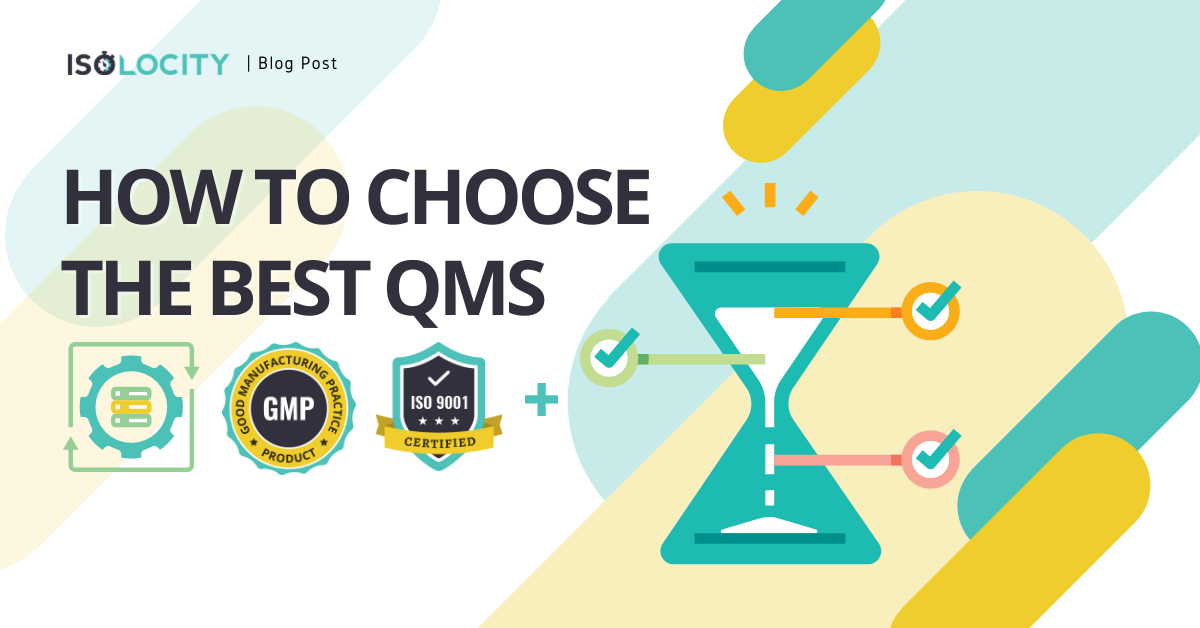In this blog, we will discuss all the factors you should consider while choosing the best QMS software for your organization. One of the biggest challenges of running a business is the sheer number of regulations that must be followed to bring your service or product to market. Paperwork and reporting requirements using the wrong QMS can make quality management difficult and costly.
Requirements can vary by a multitude of factors, such as region, consumer demands, and more. That’s why it is important to choose the right system when implementing your quality procedures.
Here are the top elements of the Best QMS Software.
- Ease of Integration
- User Experience & Interface
- Customer Support & Expertise
- Data Visualization & Access
- Software Validation
- Incorporation of Standards
- Adaptability
Organizations should closely examine these elements to determine if the system aligns with their team’s needs and requirements.
The Best QMS Software – crucial features
Ease of Integration
In modern quality management processes, a crucial solution to the burdensome paperwork is a digital quality management system. It is vital that the system is easily accessible and facilitates data population. One effective practice is utilizing fully cloud-based systems, enabling users to access their database from anywhere through their browser. This approach ensures real-time data updates and enables swift communication through prompt notifications to team members.
A technical point that falls under this category is also the ability to integrate with other systems or capture/send data easily. Having an open API (application programming interface) will help with this as it allows other software to build secure connections for related applications within your QMS. It opens up the potential for growth and the creation of a quality ecosystem that is cohesive and holistic.
User Experience & Interface
Exceptional software systems are crucial in facilitating seamless navigation between relevant tools and prompting necessary reporting. They achieve this by intelligently highlighting requirements within the system. For example, when a modification is made to an inspection report, the system promptly identifies the need for a change control report. This ensures a smooth and efficient experience within the QMS, enhancing usability and productivity.
Customer Support & Expertise
The user experience can also extend to support systems that make learning or using the tools seamless for your team. This includes the help desk, built-in instructional design, and the people who interact with you as the customer support team.
Ideally, your QMS should have in-house expertise that is trained in compliance for quality and know the standards that are being employed. Having a great support system for your QMS will always make the journey to compliance easier.
Data Visualization & Access
A QMS serves as more than just a repository for an organization’s procedures; it should also provide insights for cost optimization and risk mitigation. By utilizing data visualization through charts and graphs, you can effectively analyze the information presented by the quality management system. This empowers you to make informed business decisions based on the valuable insights highlighted by the system.
Having access to the raw data is also a crucial feature that should not be overlooked. This allows teams to create custom reporting that could prove crucial in determining cross-departmental quality management KPIs. It also allows teams to send data to other systems or departments which do not have direct access to the QMS.
Software Validation Protocol
It is important not to overlook whether the QMS provider offers standardized software validation that they can provide to your organization. This is a crucial step in many compliance audit processes and many software providers do not offer this service. If a company is willing and able to provide the correct validation documentation. This can prove to be a valuable asset as it will reduce the amount of time and resources you need to produce such documentation yourself.
The software itself should also have a way for you to follow every change that is made to a document or process. An audit trail or activity tracking is a crucial technical feature that teams should look for.
Incorporation of Standards
Implementation of quality standards in an existing or new organization is usually what eats away at profits and increases the amount of time used solely on training or error-correcting. Therefore, if the quality management system is built upon the principles of benchmark standards such as ISO and GMP – it will provide a more seamless and quick transition. Incorporation of common report templates such as 3 x 5 why, HACCP, PFMEA, and more can also ensure that the organization organically continually improves upon its quality processes.
Adaptability
One of the biggest reasons for employing a digital QMS is for consideration of long-term organizational goals. Whether you’re a small batch operator or a large processing facility, a system that has the flexibility to fit both your current needs while having the ability to adapt is paramount in ensuring the efficiency of activating changes while not compromising quality.
This also means that the system must have the technical ability to add data and users without damaging the user experience. Systems should be able to drive permissions and access parameters that allow the team to delegate the correct change control procedures and upgrade as needed. The absence of this could end up costing precious time and resources if they cannot adapt to your organizational changes or there isn’t a robust user management system.
Reduce Quality Management Time by Up to 50% With Automation
Implementing the right quality management system doesn’t have to be painstaking or costly. With a cloud-based quality management system like Isolocity, document/change management is convenient and secure. Learn about how you can drive more value from your quality management system today.
Rate us on G2.




